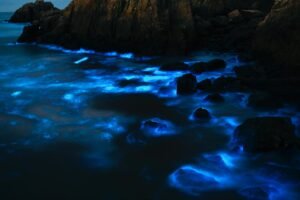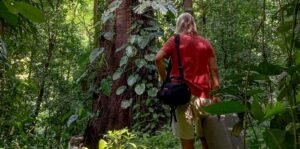Bougainvillea
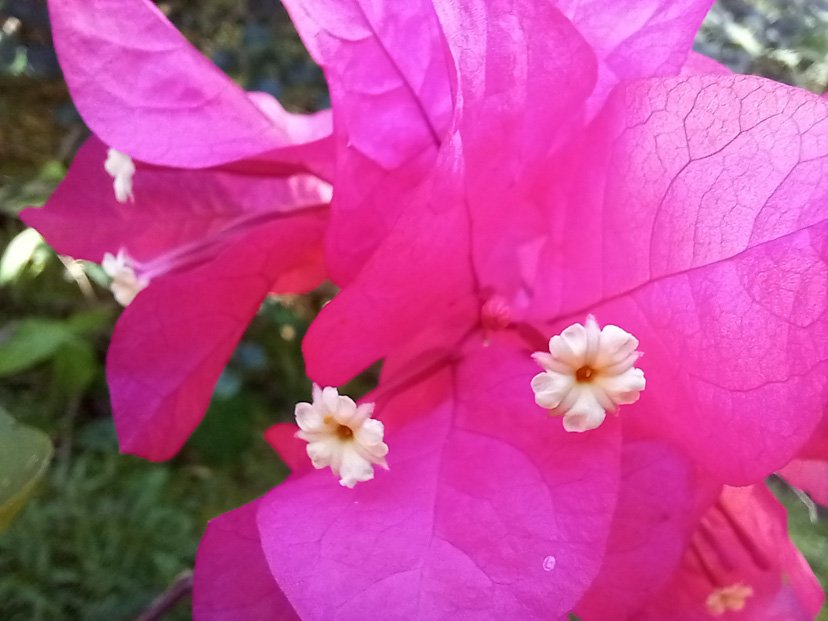
Did you know that Bougainvillea may have been first described, in 1789, by a woman disguised as a man so that she could accompany her lover, a fellow botanist, on a round-the-world sailing expedition? Or that the shrub is native to South America, not Africa as commonly thought?
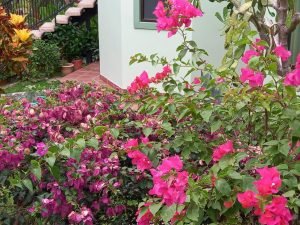
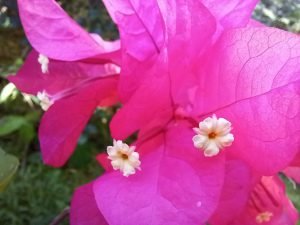
BOUGAINVILLEA
Bougainvillea now grows across the globe, adding bursts of color to Mediterranean towns, Red Sea resorts, and tropical destinations in Asia and South America. The Greek Islands showcase it best—try finding a photo of Santorini without a vivid Bougainvillea trailing in the background. The plant thrives year-round, offering flowers in nearly every shade. It grows easily, tolerates drought and frost, handles salty soil, and can be trained to form tunnels, climb fences, or cover entire buildings.
In Costa Rica, Bougainvillea is everywhere. You’ll see it blooming across Ojochal and throughout Costa Ballena’s towns and villages. The French and British helped spread it globally. In the 19th century, Kew Gardens cultivated Bougainvillea and shipped it to British colonies. The French did the same, introducing it to their own territories. Today, it’s a symbol of tropical charm and colonial legacy.
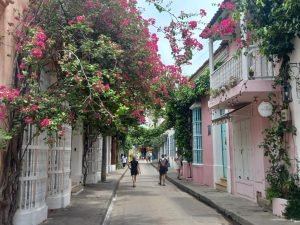

HISTORY AND FIRST DESCRIPTION
Let’s return to the plant’s first description by the Europeans, which is a very interesting story! There are two competing theories about the first person to describe the plant. The plant bears the name of French Navy’s Admiral Louis Antoine de Bougainville who, in 1776, left on a voyage to circumnavigate the earth. Accompanying him was Philibert Commerçon, a respected botanist and his valet who dressed, looked and acted like a man but was later revealed to be a woman and his future wife, Jeanne Baret.
Jeanne Baret knew plants better than most. She dressed as a man to join Philibert Commerson on a global voyage. Women couldn’t board French naval ships, so disguise was her only option. She signed on as Commerson’s valet and assistant. Near Rio de Janeiro, one of them spotted Bougainvillea first. Some say Philibert named it. Others believe Jeanne collected it while he stayed injured on the ship. The truth remains unclear, but both played a role.
In Tahiti, locals saw through her disguise. She revealed her identity and continued the journey. Jeanne became the first woman to circle the globe. After Philibert died, she returned to France. She married a soldier and ran a pub. Records show she served beer on Sundays—against the rules. Her story blends science, rebellion, and adventure. Undoubtfully, someone will turn it into a series very soon!
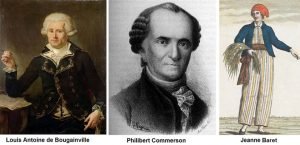
ABOUT THE PLANT
Bougainvillea earns the nickname “paper flower” thanks to its thin, vibrant bracts. These bracts—usually three or six—surround the tiny central flowers. They look like petals but serve a different purpose. Bracts help attract pollinators and support the plant’s reproductive cycle.
Many people mistake the bracts for actual flowers. The true flowers sit in the center, small and white, often overlooked. As the flowers mature, they produce fruit. In the photo below, you’ll notice these delicate blooms at different stages. The bracts steal the show, but the real magic happens quietly in the middle.
Another interesting fact about the MAGENTA varieties of Bougainvillea, such as one pictured below – the color ‘Magenta’ is a scam. It does not exist. You will not find it on the spectrum rainbow. It is a color that combines Red (the leftmost color on the spectrum, with the lowest wavelength, a lower wavelength gives the invisible infrared) and Violet (the rightmost color on the spectrum with the highest wavelength, a higher wavelength gives the invisible ultraviolet). The brain decided to create an in-between these two opposite colors and we have magenta. Magenta is often seen in nature as it is a color which gives maximum contrast against green, so it is used to attract pollinators to the flowers of many plants.
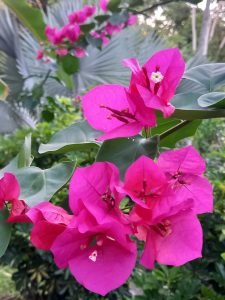
MEDICINAL PROPERTIES
Bougainvillea is widely used as a medicinal plant. It has very potent antifertility properties and has been used to that effect by native South American tribes and, in more recent times – by tribal societies in countries such as India, Botswana and Nigeria where the use of Bougainvillea as an antifertility agent has been subject to scientific study. The plant reduces sperm county by 87% and also disrupts the female cycle, thus its effect is common to both men and women, attesting to the potency. In Mexico Bougainvillea tea has been traditionally used to treat coughs and respiratory issues. Scientific studies described antibacterial, anti-inflammatory, antioxidant, antifungal, antidiabetic, antifertility, antiulcer, and antiviral properties of the plant. If you choose to use Bougainvillea for medical purposes be sure to do your own research and consult your doctor first as I am NOT giving out medical advice!
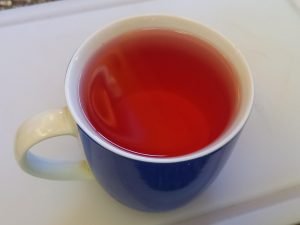
TAKE CARE!
Care must be taken when working around Bougainvillea as the plant is covered in very sharp thorns – the same thorns which help it climb over other plants and scale buildings. Additionally due to its toxicity, the sap of Bougainvillea can cause severe skin rashes – similar to those resulting from Poison Oak or Poison Ivy.
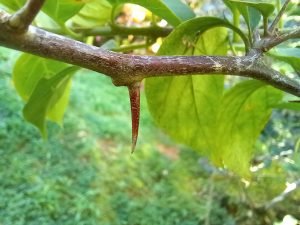
THESE PLANTS ARE *EVERYWHERE*
Next time you see a brilliant Bougainvillea shrub, remember the rich and interesting history of her discovery, and her medical properties – and appreciate the beauty and vibe she adds to gardens, cafes, old town centers, and tropical and subtropical areas all around the world.

Our local gardens are an explosion of color, shape and creativity. With so many trees, shrubs, flowers and orchids to work with, you could turn your front yard or backyard into a work of botanical art! Imagine waking up to this beauty – and then browse the properties available in the lush Costa Ballena area right now! And when ready, your trusted partners at RE/MAX WE SELL PARADISE will gladly take your call – making a new home here is MUCH quicker and easier than you could ever imagine!


